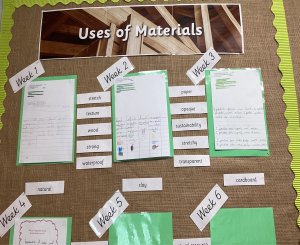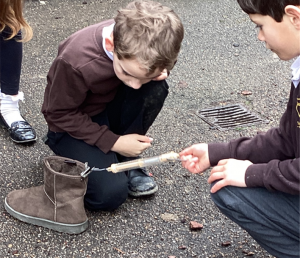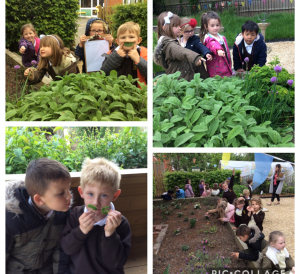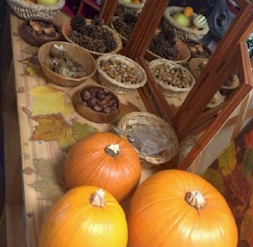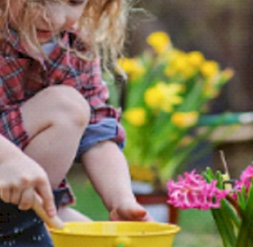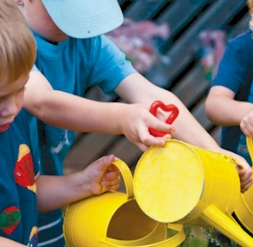
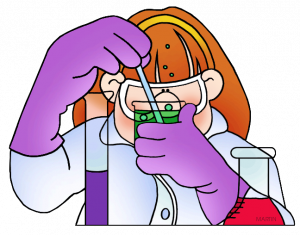
At Sandhurst Primary School, our intent is to approach science with a deeper, more engaging curriculum to enable pupils to aim high. With a mastery approach, to accelerate higher order thinking and create enjoyment within every lesson, the children will feel inspired and be equipped with the skills, and knowledge necessary to follow their own natural curiosity, applying the scientific inquiry and reasoning skills they have learnt to other settings, to seek challenge in all they do and experience in their lives.
The children will develop as scientists, with the foundations for understanding the world through the specific disciplines of biology, chemistry and physics. All children will be taught essential aspects of the knowledge, methods, processes and uses of science. They will be empowered with skills of observation, scrutiny, questioning, comparison and contrast, ordering and evaluation. They will become passionate enquirers and be utterly absorbed by the world around them; inspired to push boundaries of understanding through observation, testing, and hypothesising questions they have created themselves with kindness.
Where appropriate, pupils will be encouraged to apply their reading, writing and mathematical skills, using subject-specific vocabulary whilst presenting their work in written form, communicating ideas, researching in non-fiction texts and presenting and analysing data and figures.
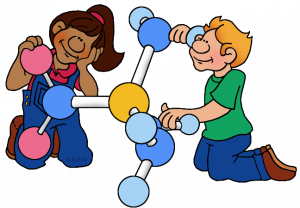 At Sandhurst Primary School we believe that high-quality science education provides the foundations for understanding the world through the specific disciplines of biology, chemistry and physics. Science has changed our lives and is vital to the world’s future prosperity, and all pupils should be taught essential aspects of the knowledge, methods, processes and uses of science. Through building up a body of key foundational knowledge and concepts, pupils at Sandhurst School are encouraged to recognise the power of rational explanation and develop a sense of excitement and curiosity about natural phenomena. They are encouraged to understand how science can be used to explain what is occurring, predict how things will behave, and analyse causes.
At Sandhurst Primary School we believe that high-quality science education provides the foundations for understanding the world through the specific disciplines of biology, chemistry and physics. Science has changed our lives and is vital to the world’s future prosperity, and all pupils should be taught essential aspects of the knowledge, methods, processes and uses of science. Through building up a body of key foundational knowledge and concepts, pupils at Sandhurst School are encouraged to recognise the power of rational explanation and develop a sense of excitement and curiosity about natural phenomena. They are encouraged to understand how science can be used to explain what is occurring, predict how things will behave, and analyse causes.
Year 1
| Year 1 | |||
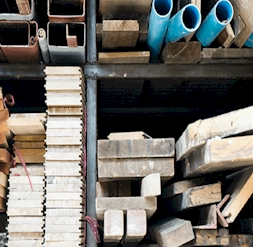
Everyday Materials This project teaches children that objects are made from materials. They identify a range of everyday materials and their sources. Children investigate the properties of materials and begin to recognise that a material's properties define its use. |
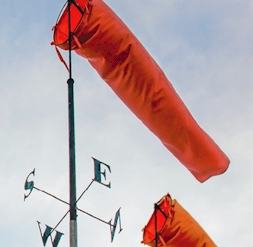
Seasonal Changes This project teaches children about the seasons, seasonal changes and typical seasonal weather and events. They learn about measuring the weather and the role of a meteorologist. Children begin to learn about the science of day and night and recognise that the seasons have varying day lengths in the UK. |
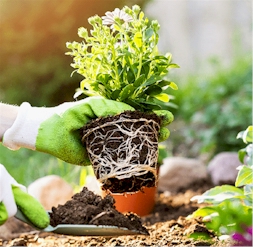
Plant Parts This project teaches children about wild and garden plants by exploring the local environment. They identify and describe the basic parts of plants and observe how they change over time. |
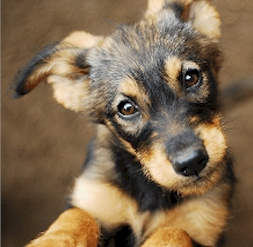
Animal Parts This project teaches children about animals, including fish, amphibians, reptiles, birds, mammals and invertebrates. They identify and describe their common structures, diets, and how animals should be cared for.
|
Year 2
| Year 2 | ||||
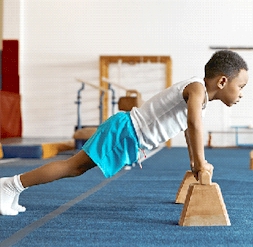
Human Survival This project teaches children about the basic needs of humans for survival, including the importance of exercise, nutrition and good hygiene. They learn how human offspring grow and change over time into adulthood. |
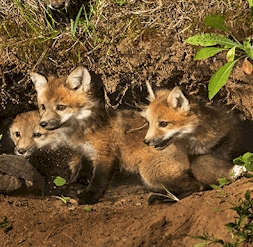
Habitats This project teaches children about habitats and what a habitat needs to provide. They explore local habitats to identify and name living things and begin to understand how they depend on one another for food and shelter. |
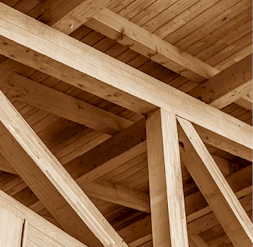
Uses of Materials This project teaches children about the uses of everyday materials and how materials' properties make them suitable or unsuitable for specific purposes. They begin to explore how materials can be changed. |
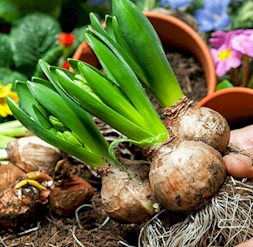
Plant Survival This project teaches children about the growth of plants from seeds and bulbs. They observe the growth of plants first-hand, recording changes over time and identifying what plants need to grow and stay healthy. |
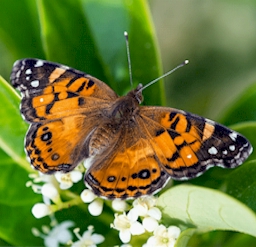
Animal Survival This project teaches children about growth in animals by exploring the life cycles of some familiar animals. They build on learning about the survival of humans by identifying the basic needs of animals for survival, including food, water, air and shelter.
|
Year 3
| Year 3 | |||
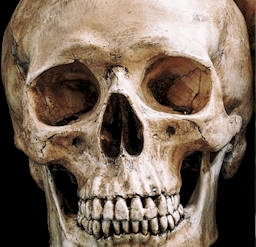
Animal nutrition and the Skeletal System This project teaches children about the importance of nutrition for humans and other animals. They learn about the role of a skeleton and muscles and identify animals with different types of skeleton. |
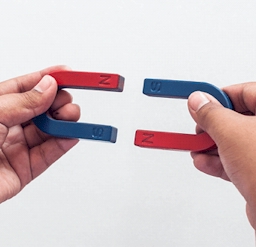
Forces and Magnets This project teaches children about contact and non-contact forces, including friction and magnetism. They investigate frictional and magnetic forces, and identify parts of a magnet and magnetic materials.
|
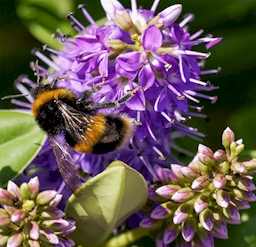
Plant Nutrition and Reproduction This project teaches children about the requirements of plants for growth and survival. They describe the parts of flowering plants and relate structure to function, including the roots and stem for transporting water, leaves for making food and the flower for reproduction. |
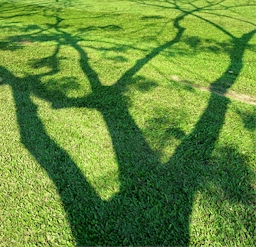
Light and Shadows This project teaches children about light and dark. They investigate the phenomena of reflections and shadows, looking for patterns in collected data. The risks associated with the Sun are also explored. |
Year 4
| Year 4 | |||
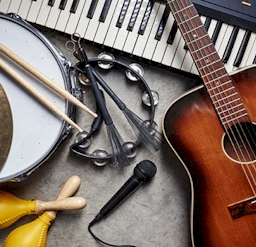
Sound This project teaches children about sound, how sound is made and how sound travels as vibrations through a medium to the ear. They learn about pitch and volume and find out how both can be changed.
|
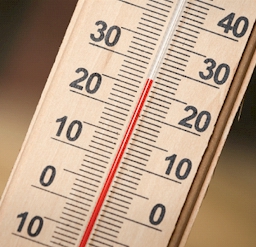
States of Matter This project teaches children about solids, liquids and gases and their characteristic properties. They observe how materials change state as they are heated and cooled, and learn key terminology associated with these processes. |
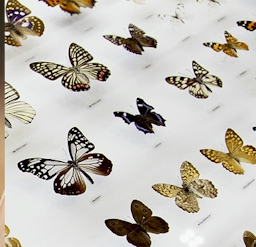
Grouping and Classifying This project teaches children about grouping living things, known as classification. They study the animal and plant kingdoms and use and create classification keys to identify living things. |
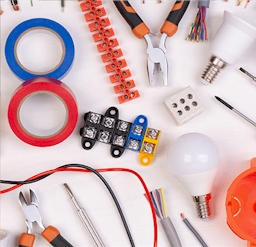
Electrical Circuits and Conductors This project teaches children about electrical appliances and safety. They construct simple series circuits and name their parts and functions, including switches, wires and cells. They investigate electrical conductors and insulators and identify common features of conductors. It also teaches children about programmable devices. |
Year 5
| Year 5 (Cycle B) | |||
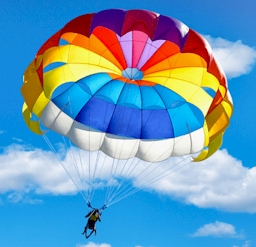
Forces and Mechanisms This project teaches children about the forces of gravity, air resistance, water resistance and friction, with children exploring their effects. They learn about mechanisms, their uses and how they allow a smaller effort to have a greater effect. |
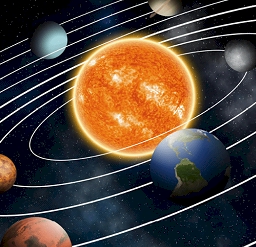
Earth and Space This project teaches children about our Solar System and its spherical celestial bodies. They describe the movements of the Earth and the other planets relative to the Sun, the Moon relative to Earth, and the Earth's rotation to explain day and night. |
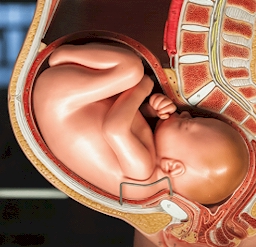
Human Reproduction and Ageing This project teaches children about animal life cycles, including the human life cycle. They explore human growth and development to old age, including the changes experienced during puberty and human reproduction. |
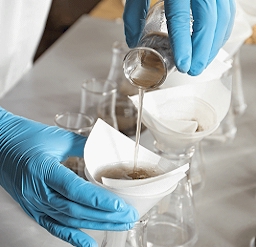
Properties and changes of materials This project teaches children about the wider properties of materials and their uses. They learn about mixtures and how they can be separated using sieving, filtration and evaporation. They study reversible and irreversible changes, and use common indicators to identify irreversible changes. |
Year 6
| Year 6 | |||
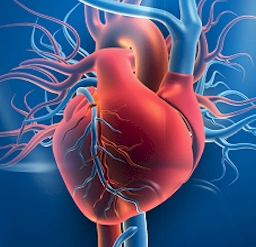
Circulatory system This project teaches children about the transport role of the human circulatory system, its main parts and primary functions. They learn about healthy lifestyle choices and the effects of harmful substances on the body. |
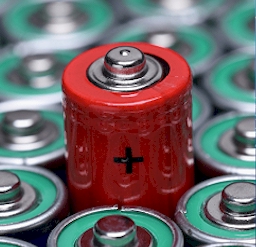
Electrical Circuits and Components This project teaches children about electrical circuits, their components and how they function. They recognise how the voltage of cells affects the output of a circuit and record circuits using standard symbols. It also teaches children about programmable devices, sensors and monitoring. They combine their learning to design and make programmable home devices. |

Light Theory This project teaches children about the way that light behaves, travelling in straight lines from a source or reflector, into the eye. They explore how we see light and colours, and phenomena associated with light, including shadows, reflections and refraction. |
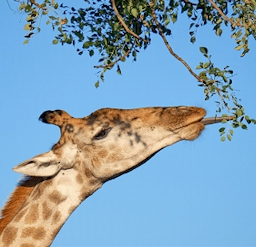
Evolution and Inheritance This project teaches children how living things on Earth have changed over time and how fossils provide evidence for this. They learn how characteristics are passed from parents to their offspring and how variation in offspring can affect their survival, with changes (adaptations) possibly leading to the evolution of a species. |
Our curriculum pedagogy is based on four distinct stages (known as the Four Cornerstones) which aim to give clear direction – through a carefully sequenced, interconnected and knowledge-rich planning sequence – for both teaching and learning: Engage – Develop – Innovate - Express
- Engage in memorable experiences that stimulate children’s curiosity, leading them to ask questions and talk about their prior learning.
- Develop new skills and knowledge by delving deeply into a theme, where children make links, create, explore, make, read and write.
- Innovate by returning to prior knowledge and skills so that children can use and apply these in new contexts (in and out of school).
- Express what has been learned by providing opportunities for children to reflect, test their knowledge and celebrate their achievements.
Following our Cornerstones Curriculum, we use quality-assured lesson resources, knowledge organisers, quizzes and question sheet to further support children’s developing scientific subject knowledge. The resources contain the essential facts that children need for each science topic, and the quizzes and question sheets are used to assess the children’s understanding.
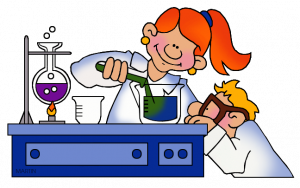 Our curriculum provides opportunities to see what knowledge children have retained and what skills they have mastered through clear curriculum endpoints which help teachers to make judgments about each child’s progress and attainment. Typically, at the end of each unit, children will complete an assessment that takes the form of a short quiz/ series of questions – this is known as an express task. This provides a summative insight that is used alongside outcomes and pupil voice to assess what has been learned.
Our curriculum provides opportunities to see what knowledge children have retained and what skills they have mastered through clear curriculum endpoints which help teachers to make judgments about each child’s progress and attainment. Typically, at the end of each unit, children will complete an assessment that takes the form of a short quiz/ series of questions – this is known as an express task. This provides a summative insight that is used alongside outcomes and pupil voice to assess what has been learned.
What do our pupils say?
We want our pupils to develop a love for science and as a result remind them, if they continue to aim high, as a scientist, they could become an astronaut, vet, biologist, civil engineer, automotive engineer, theme park designer, architect and many other exciting professions.
Aspirations for the future
We want our pupils to develop a love for science and as a result remind them, if they continue to aim high, as a scientist, they could become an astronaut, vet, biologist, civil engineer, automotive engineer, theme park designer, architect and many other exciting professions.

Cornerstones Curriculum
We provide a creative curriculum based around the Cornerstones Curriculum, a nationally recognised approach for delivering outstanding learning opportunities for children.
What is the Cornerstones Curriculum?
The Cornerstones Curriculum is a creative and thematic approach to learning that is mapped to the Primary National Curriculum to ensure comprehensive coverage of national expectations. Our new curriculum will be delivered through Imaginative Learning Projects (ILPs) which will provide a rich menu of exciting and motivating learning activities that make creative links between all aspects of our children’s learning.
We believe children learn better when they are encouraged to use their imagination and apply their learning to engaging contexts. Our new curriculum will provide lots of learning challenges throughout the academic year that will require children to solve problems, apply themselves creatively and express their knowledge and understanding effectively across the curriculum.
Cornerstones also provide a rigorous essential skills framework that outlines the end of year expectations in all subjects. These essential skills are tied to activities and are age related so that staff can track children’s progress and identify their individual learning needs.
How it Works?
Children will progress through four stages of learning in each ILP – Engage, Develop, Innovate and Express. To find out more about these stages please click on the link through to Cornerstones website:
https://cornerstoneseducation.co.uk/why-cornerstones/
Please find downloadable PDF versions of the Information available for the Science Curriculum.
Cornerstones - Science Curriculum Overview
Big Idea : Processes
| Reception | Year 1 | Year 2 | Year 3 | Year 4 | Year 5 | Year 6 |
| Big Idea : Processes | ||||||
| Aspect : Pattern seeking | ||||||
| The weather can change throughout the day, week and month. The weather is different at different times in the year. Notice and begin to describe patterns of weather in summer and winter. | There are four seasons: spring, summer, autumn and winter. Certain events and weather patterns happen in different seasons. Observe changes across the four seasons. | The UK has typical weather in each of the seasons. For example, winter is cold and sometimes frosty, whereas summer is warm and sometimes sunny. Describe typical UK seasonal weather patterns. | Shadows change shape and size when the light source moves. For example, when the light source is high above the object, the shadow is short and when the light source is low down, the object's shadow is long. Find patterns in the way shadows change during the day. | Pitch is how high or low a sound is. Parts of an instrument that are shorter, tighter or thinner produce high-pitched sounds. Parts of an instrument that are longer, looser or fatter produce low-pitched sounds. Compare and find patterns in the pitch of a sound, using a range of equipment, such as musical instruments.
Volume is how loud or quiet a sound is. The harder an instrument is hit, plucked or blown, the stronger the vibrations and the louder the sound. Compare and find patterns in the volume of a sound, using a range of equipment, such as musical instruments. |
As Earth orbits the Sun, it also spins on its axis. It takes Earth a day (24 hours) to complete a full spin. During the day, the Sun appears to move through the sky. However, this is due to the Earth rotating and not the Sun moving. Earth rotates to the east or, if viewed from above the North Pole, it rotates anti-clockwise, which means the Sun rises in the east and sets in the west. As Earth rotates, different parts of it face the Sun, which brings what we call daytime. The part facing away is in shadow, which is night time. Use the idea of Earth's rotation to explain day and night, and the Sun's apparent movement across the sky. | A shadow appears when an object blocks the passage of light. Apart from some distortion or fuzziness at the edges, shadows are the same shape as the object. The distortion or fuzziness depends on the position or type of light source. Explain, using words, diagrams or a model, why shadows have the same shape as the objects that cast them and how shadows can be changed. |
| Aspect : Changes | ||||||
| The number of daylight hours varies throughout the year, according to the season. The days are longer in summer and shorter in winter. Notice and talk about the differences in day length between the seasons. | Day length (the number of daylight hours) is longer in the summer months and shorter in the winter months. Observe and describe how day length changes across the year. | Some objects and materials can be changed by squashing, bending, twisting, stretching, heating, cooling, mixing and being left to decay. Describe how some objects and materials can be changed and how these changes can be desirable or undesirable. | Fossils form over millions of years and are the remains of a once-living organism, preserved as rock. Scientists can use fossils to find out what life on Earth was like in prehistoric times. Fossils form when a living thing dies in a watery environment. The body gets covered by mud and sand and the soft tissues rot away. Over time, the ground hardens to form sedimentary rock and the skeletal or shell remains turn to rock. Describe simply how fossils are formed, using words, pictures or a model. | Heating or cooling materials can bring about a change of state. This change of state can be reversible or irreversible. The temperature at which materials change state varies depending on the material. Water changes state from solid (ice) ⇌ liquid (water) at 0°C and from liquid (water) ⇌ gas (water vapour) at 100°C. The process of changing from a solid to liquid is called melting. The reverse process of changing from a liquid to a solid is called freezing. The process of changing from a liquid to a gas is called evaporation. The reverse process of changing from a gas to a liquid is called condensation. Observe and explain that some materials change state when they are heated or cooled and measure or research the temperature in degrees Celsius (˚C) at which materials change state. | Reversible changes include heating, cooling, melting, dissolving and evaporating. Irreversible changes include burning, rusting, decaying and chemical reactions. Identify, demonstrate and compare reversible and irreversible changes. | Describe some significant changes that have happened on Earth and the evidence, such as fossils, that support this. |
| Aspect : Earth | ||||||
| Ways to describe daily weather include sunny, rainy, windy, cloudy, warm or cold. Weather is warmer in the summer with more sunshine and colder in the winter with more snow, hail and rain. Describe simply how weather changes as the seasons change. | Different types of weather include sunshine, rain, hail, wind, snow, fog, lightning, storm and cloud. The weather can change daily and some weather types are more common in certain seasons, such as snow in winter. Observe and describe different types of weather. | The Earth is spherical and is covered in water and land. When it is daytime in one location, it is night time on the other side of the world. Describe features of Earth using words and pictures. | Soils are made from tiny pieces of eroded rock, air and organic matter. There are a variety of naturally occurring soils, including clay, sand and silt. Different areas have different soil types. Investigate soils from the local environment, making comparisons and identifying features. | The water cycle has four stages: evaporation, condensation, precipitation and collection. Water in lakes, rivers and streams is warmed by the Sun, causing the water to evaporate and rise into the air as water vapour. As the water vapour rises, it cools and condenses to form water droplets in clouds. The clouds become full of water until the water falls back to the ground as precipitation (rain, hail, snow and ice). The fallen water collects back in lakes, rivers and streams. Evaporation and condensation are caused by temperature changes. Describe the water cycle using words or diagrams and explain the part played by evaporation and condensation. | The Solar System is made up of the Sun and everything that orbits around it. There are eight planets in our Solar System: Mercury, Venus, Earth, Mars, Jupiter, Saturn, Uranus and Neptune. Earth orbits around the Sun and a year (365.25 days) is the length of time it takes for Earth to complete a full orbit. Describe or model the movement of the planets in our Solar System, including Earth, relative to the Sun.
The Moon orbits Earth, completing a full orbit every month (27.3 days). Describe or model the movement of the Moon relative to Earth. |
Light travels in straight lines. Identify that light travels in straight lines.
Light sources give out light. They can be natural or artificial. When light hits an object, it is absorbed, scattered, reflected or a combination of all three. Light from a source or reflected light enter the eye. Vertebrates, such as mammals, birds and reptiles, have a cornea and lens that refracts light that enters the eye and focuses it on the nerve tissue at the back of the eye, which is called the retina. Once light reaches the retina, it is transmitted to the brain via the optic nerve. Explain that, due to how light travels, we can see things because they give out or reflect light into the eye. |
| Aspect : Phenomena | ||||||
| Natural phenomena include weather, shadows, rainbows, clouds, flooding and waves. Name and describe natural phenomena, such as the size of shadows, the colours of a rainbow, the speed of clouds moving across the sky and the strength of a wave. | A shadow is formed when light from a light source, such as the Sun, is blocked by an opaque object, but not by transparent objects. Explain in simple terms how shadows are formed. | When an instrument is played by plucking, striking or blowing, the air around or inside it vibrates. These vibrations travel as a sound wave to the ear. Explain in simple terms how sounds are made. | Dark is the absence of light and we need light to be able to see. Describe the differences between dark and light and how we need light to be able to see.
A shadow is formed when light from a light source, such as the Sun, is blocked by an object. Opaque objects cast dark shadows. Translucent objects cast pale shadows. Transparent objects cast very pale shadows. Explain, using words or diagrams, how shadows are formed when a light source is blocked by an opaque object. |
When an instrument is played, the air around or inside it vibrates. These vibrations travel as a sound wave. Sound waves travel through a medium, such as air or water, to the ear. Explain how sounds are made and heard using diagrams, models, written methods or verbally. | The Sun, Earth, Moon and the planets in our solar system are roughly spherical. All planets are spherical because their mass is so large that they have their own force of gravity. This force of gravity pulls all of a planet’s material towards its centre, which compresses it into the most compact shape – a sphere. Describe the Sun, Earth and Moon as approximately spherical bodies and use this knowledge to understand the phases of the Moon and eclipses. | ‘White’ light is a term used to describe visible, ordinary daylight. White light can be split into a spectrum of colours (rainbow) by droplets of water or prisms. Describe, using scientific language, phenomena associated with refraction of light. |
| Aspect : Forces | ||||||
| Some objects float and others sink. When an object sinks it falls through water to the bottom of the vessel. An object that floats stays at the water's surface. Describe, predict and sort things that float and sink and talk about the forces that they can feel. | Simple equipment can be used for measuring weather, such as measuring temperature with a thermometer; identifying wind direction and force with a windsock or measuring rainfall with a rain gauge. Investigate weather using toys, models or simple equipment. | Some objects float and others sink. Objects that float are typically light or hollow. Objects that sink are typically heavy or dense. Sort and group objects that float and sink. | An object will not move unless a pushing or pulling force is applied. Some forces require direct contact, whereas other forces can act at a distance, such as magnetic force. Explain that an object will not move unless a push or pull force is applied, describing forces in action and whether the force requires direct contact or whether the force can act at a distance (magnetic force). | A series circuit is a simple loop with only one path for the electricity to flow. A series circuit must be a complete loop to work and have a source of power from a battery or cell. Predict and describe whether a circuit will work based on whether or not the circuit is a complete loop and has a battery or cell. | Gravity is a force of attraction. Anything with a mass can exert a gravitational pull on another object. The Earth's large mass exerts a gravitational pull on all objects on Earth, making dropped objects fall to the ground. Explain that objects fall to Earth due to the force of gravity. | Voltage is measured in volts (V) and is a measure of the difference in electrical energy between two parts of a circuit. The bigger the voltage, the more electrons are pushed through the circuit. The more voltage flowing through a lamp, buzzer or motor, the brighter the lamp, the louder the buzzer and the faster the motor. Explain how the brightness of a lamp or volume of a buzzer is affected by the number and voltage of cells used in a circuit. |
| Aspect Modelling | ||||||
| Some light sources need electricity or batteries to work, such as a torch, and some do not, such as candles. Explore and describe electrical and non-electrical light sources. | Electrical circuits can light lamps or sound a buzzer. A switch turns an electrical circuit off and on. Describe, following exploration, what simple electrical circuits can do. | Models can have moving parts that use levers, sliders, wheels and axles. Make models with moving parts. | Make working models with simple mechanisms or electrical circuits. | Electrical components include cells, wires, lamps, motors, switches and buzzers. Switches open and close a circuit and provide control. Construct operational simple series circuits using a range of components and switches for control. | Mechanisms, such as levers, pulleys and gears, give us a mechanical advantage. A mechanical advantage is a measurement of how much a simple machine multiplies the force that we put in. The bigger the mechanical advantage, the less force we need to apply. Describe and demonstrate how simple levers, gears and pulleys assist the movement of objects. | There are recognised symbols for different components of circuits. Create circuits using a range of components and record diagrammatically using the recognised symbols for electrical components. |
Big Idea : Creativity
| Reception | Year 1 | Year 2 | Year 3 | Year 4 | Year 5 | Year 6 |
| Big Idea : Creativity | ||||||
| Aspect : Report and conclude | ||||||
| Reception | Year 1 | Year 2 | Year 3 | Year 4 | Year 5 | Year 6 |
| Represent scientific observations by mark making, drawing or creating simple charts and tables. Offer explanations for why things happen, making use of vocabulary, such as, because, then and next. | The results are information that has been found out from an investigation. Talk about what they have done and say, with help, what they think they have found out. | The results are information that has been found out from an investigation and can be used to answer a question. Begin to notice patterns and relationships in their data and explain what they have done and found out using simple scientific language. | Results are information that has been discovered as part of an investigation. A conclusion is the answer to a question that uses the evidence collected. Use suitable vocabulary to talk or write about what they have done, what the purpose was and, with help, draw a simple conclusion based on evidence collected, beginning to identify next steps or improvements. | Results are information, such as data or observations, that have been found out from an investigation. A conclusion is the answer to a question that uses the evidence collected. Use scientific vocabulary to report and answer questions about their findings based on evidence collected, draw simple conclusions and identify next steps, improvements and further questions. | The results are information, such as measurements or observations, that have been collected during an investigation. A conclusion is an explanation of what has been discovered using evidence collected. Use relevant scientific vocabulary to report on their findings, answer questions and justify their conclusions based on evidence collected, identify improvements, further questions and predictions. | The results are information, such as measurements or observations, that have been collected during an investigation. A conclusion is an explanation of what has been discovered, using correct, precise terminology and collected evidence. Report on and validate their findings, answer questions and justify their methods, opinions and conclusions, and use their results to suggest improvements to their methodology, separate facts from opinions, pose further questions and make predictions for what they might observe. |
| Aspect : Gather and record data | ||||||
| Data can be recorded in tables and pictograms. Record data in simple tables and pictograms. | Data can be recorded and displayed in different ways, including tables, pictograms and drawings. With support, gather and record simple data in a range of ways (data tables, diagrams, Venn diagrams). | Data can be recorded and displayed in different ways, including tables, charts, pictograms and drawings. Use a range of methods (tables, charts, diagrams and Venn diagrams) to gather and record simple data with some accuracy. | Data can be recorded and displayed in different ways, including tables, charts, graphs and labelled diagrams. Data can be used to provide evidence to answer questions. Gather and record findings in a variety of ways (diagrams, tables, charts and graphs) with increasing accuracy. | Data can be recorded and displayed in different ways, including tables, charts, graphs, keys and labelled diagrams. Gather, record, classify and present observations and measurements in a variety of ways (pictorial representations, timelines, diagrams, keys, tables, charts and graphs). | Data can be recorded and displayed in different ways, including tables, bar and line charts, classification keys and labelled diagrams. Gather and record data and results of increasing complexity, selecting from a range of methods (scientific diagrams, labels, classification keys, tables, graphs and models). | Data can be recorded and displayed in different ways, including tables, bar and line charts, scatter graphs, classification keys and labelled diagrams. Choose an appropriate approach to recording accurate results, including scientific diagrams, labels, timelines, classification keys, tables, models and graphs (bar, line and scatter), linking to mathematical knowledge. |
Big Idea : Investigation
| Reception | Year 1 | Year 2 | Year 3 | Year 4 | Year 5 | Year 6 |
| Big Idea : Investigation | ||||||
| Aspect : Questioning | ||||||
| Reception | Year 1 | Year 2 | Year 3 | Year 4 | Year 5 | Year 6 |
| Question words include who, why, what, when, where and how. Ask a relevant scientific question to find out more, explain how things work and why they might happen. | Question words include what, why, how, when, who and which. Ask simple scientific questions. | Questions can help us find out about the world. Ask and answer scientific questions about the world around them. | Questions can help us find out about the world and can be answered in different ways. Ask questions about the world around them and explain that they can be answered in different ways. | Questions can help us find out about the world and can be answered using scientific enquiry. Ask relevant scientific questions, independently, about the world around them and begin to identify how they can answer them. | Questions can help us find out about the world and can be answered using a range of scientific enquiries. Ask a wide range of relevant scientific questions that broaden their understanding of the world around them and identify how they can answer them. | Questions can help us find out about the world and can be answered using a range of scientific enquiries, including fair tests, research and observation. Ask and answer deeper and broader scientific questions about the local and wider world that build on and extend their own and others' experiences and knowledge. |
| Aspect : Measurement | ||||||
| Simple equipment can be used to measure distance, height, weight and time. With support, use simple equipment, such as timers, rulers and containers, to measure length, height, capacity and time. | Simple equipment is used to take measurements and observations. Examples include metre sticks, measuring tapes, egg timers and hand lenses. With support, use simple equipment to measure and make observations. | Simple equipment is used to take measurements and observations. Examples include timers, hand lenses, metre sticks and trundle wheels. Use simple equipment to measure and make observations. | Equipment is used to take measurements in standard units. Examples include data loggers plus sensors, timers (seconds, minutes and hours), thermometers (°C) and metre sticks (millimetres, centimetres and metres). Taking repeat readings can increase the accuracy of the measurement. Take measurements in standard units, using a range of simple equipment. | Equipment is used to take measurements in standard units. Examples include data loggers plus sensors, timers (seconds, minutes and hours), thermometers (°C), and metre sticks, rulers or trundle wheels (millimetres, centimetres, metres). Take accurate measurements in standard units, using a range of equipment. | Specialised equipment is used to take measurements in standard units. Examples include data loggers plus sensors, such as light (lux), sound (dB) and temperature (°C); timers (seconds, minutes and hours); thermometers (°C), and measuring tapes (millimetres, centimetres, metres). Take increasingly accurate measurements in standard units, using a range of chosen equipment. | Specialised equipment is used to take accurate measurements in standard units. Examples include data loggers plus sensors, such as light (lux), sound (dB) and temperature (°C); timers (seconds, minutes and hours); thermometers (°C) and measuring tapes (millimetres, centimetres, metres). Take accurate, precise and repeated measurements in standard units, using a range of chosen equipment. |
| Aspect : Investigation | ||||||
| When we try things out to see if they work, it is called a test. Observe how activities are going and adapt their ideas if necessary. | Simple tests can be carried out by following a set of instructions. With support, follow instructions to perform simple tests and begin to talk about what they might do or what might happen. | Tests can be carried out by following a set of instructions. A prediction is a guess at what might happen in an investigation. Follow a set of instructions to perform a range of simple tests, making simple predictions for what might happen and suggesting ways to answer their questions. | Tests can be set up and carried out by following or planning a set of instructions. A prediction is a best guess for what might happen in an investigation based on some prior knowledge. Set up and carry out some simple, comparative and fair tests, making predictions for what might happen. | Scientific enquiries can be set up and carried out by following or planning a method. A prediction is a statement about what might happen in an investigation, based on some prior knowledge or understanding. A fair test is one in which only one variable is changed and all others remain constant. Begin to independently plan, set up and carry out a range of comparative and fair tests, making predictions and following a method accurately. | A method is a set of clear instructions for how to carry out a scientific investigation. A prediction is a statement about what might happen in an investigation based on some prior knowledge or understanding. Plan and carry out a range of enquiries, including writing methods, identifying variables and making predictions based on prior knowledge and understanding. | A method is a set of clear instructions for how to carry out a scientific investigation, including what equipment to use and observations to make. A variable is something that can be changed during a fair test. A prediction is a statement about what might happen in an investigation based on some prior knowledge or understanding. Plan and carry out a range of enquiries, including writing methods, identifying and controlling variables, deciding on equipment and data to collect and making predictions based on prior knowledge and understanding. |
| Aspect : Observation | ||||||
| With support, observe, record and talk about materials and living things. | Objects, materials and living things can be looked at and compared. Observe objects, materials, living things and changes over time, sorting and grouping them based on their features. | Objects, materials and living things can be looked at, compared and grouped according to their features. Observe objects, materials, living things and changes over time, sorting and grouping them based on their features and explaining their reasoning. | An observation involves looking closely at objects, materials and living things, which can be compared and grouped according to their features. Make increasingly careful observations, identifying similarities, differences and changes and making simple connections. | An observation involves looking closely at objects, materials and living things. Observations can be made regularly to identify changes over time. Begin to choose which observations to make and for how long and make systematic, careful observations and comparisons, identifying changes and connections. | An observation involves looking closely at objects, materials and living things. Accurate observations can be made repeatedly or at regular intervals to identify changes over time. Within a group, decide which observations to make, when and for how long, and make systematic and careful observations, using them to make comparisons, identify changes, classify and make links between cause and effect. | An observation involves looking closely at objects, materials and living things. Accurate observations can be made repeatedly or at regular intervals to identify changes over time, identify processes and make comparisons. Independently decide which observations to make, when and for how long and make systematic and careful observations, using them to make comparisons, identify changes, classify and make links between cause and effect. |
Big Idea : Materials
| Reception | Year 1 | Year 2 | Year 3 | Year 4 | Year 5 | Year 6 |
| Big Idea : Materials | ||||||
| Aspect : Identification and classification | ||||||
| Reception | Year 1 | Year 2 | Year 3 | Year 4 | Year 5 | Year 6 |
| Objects are made from different materials. Everyday materials include, wood, plastic, glass, fabric, metal and stone. Materials have different properties. Name and sort everyday items into groups of the same material. | A material is what an object is made from. Everyday materials include wood, plastic, glass, metal, water, rock, brick, paper and fabric. Identify and name what an object is made from, including wood, plastic, glass, metal, water and rock. | Some foods, such as ice and chocolate, melt when heated, but then harden (solidify or freeze) when cooled. Observe what happens when a range of everyday materials, including foods, are heated and cooled, sorting and grouping them based on their observations. | Light can be reflected from different surfaces. Some surfaces are poor reflectors, such as some fabrics, while other surfaces are good reflectors, such as mirrors. Group and sort materials as being reflective or non-reflective. | Materials can be grouped according to whether they are solids, liquids or gases. Solids stay in one place and can be held. Some solids can be squashed, bent, twisted and stretched. Examples of solids include wood, metal, plastic and clay. Liquids move around (flow) easily and are difficult to hold. Liquids take the shape of the container in which they are held. Examples of liquids include water, juice and milk. Gases spread out to fill the available space and cannot be held. Examples of gases include oxygen, helium and carbon dioxide. Air is a mixture of gases. Group and sort materials into solids, liquids or gases. | Materials can be grouped according to their basic physical properties. Properties include hardness, solubility, transparency, conductivity (electrical and thermal) and magnetism. Compare and group everyday materials by their properties, including hardness, solubility, transparency, conductivity (electrical and thermal) and magnetism.
Some materials (solutes) will dissolve in liquid (solvents) to form a solution. The solute can be recovered by evaporating off the solvent by heating. Explain, following observation, that some substances (solutes) will dissolve in liquid (solvents) to form a solution and the solute can be recovered by evaporating off the solvent. |
Heat energy is transferred in three different ways: conduction, convection and radiation. A material that allows heat energy to travel through it is a thermal conductor. Poor thermal conductors are known as thermal insulators. Insulation is important for the survival of many animals. Blubber is a layer of fat that acts as an insulator under the skin of some animals, such as walruses and whales. It is an adaptation that is essential for their survival. Animals with fur, such as polar bears and Arctic foxes, trap a layer of air close to their skin to insulate them from the cold. Investigate and identify good thermal insulators, describing their common features. |
| Aspect : Properties and uses | ||||||
| Some materials are magnetic, which means that they are attracted to (pull towards) a magnet. Some metals are magnetic. Other materials are non-magnetic, such as wood, dough and glass. Identify that materials have different properties and explore and sort magnetic and non-magnetic materials through play and exploration. | Materials have different properties, such as hard or soft; stretchy or stiff; rough or smooth; opaque or transparent; bendy or rigid; waterproof or not waterproof. Investigate and describe the simple physical properties of some everyday materials, such as hard or soft; stretchy or stiff; rough or smooth; opaque or transparent; bendy or rigid and waterproof or not waterproof. | A material's physical properties make it suitable for particular purposes, such as glass for windows and brick for building walls. Many materials are used for more than one purpose, such as metal for cutlery and cars. Compare the suitability of a range of everyday materials for particular uses, including wood, metal, plastic, glass, brick, rock, paper and cardboard . | There are three different rock types: sedimentary, igneous and metamorphic. Sedimentary rocks form from mud, sand and particles that have been squashed together over a long time to form rock. Examples include sandstone and limestone. Igneous rocks are made from cooled magma or lava. They usually contain visible crystals. Examples include pumice and granite. Metamorphic rocks are formed when existing rocks are heated by the magma under the Earth’s crust or squashed by the movement of the Earth’s tectonic plates. They are usually very hard. Examples include slate and marble. Compare and group rocks based on their appearance, properties or uses.
Some materials have magnetic properties. Magnetic materials are attracted to magnets. All magnetic materials are metals but not all metals are magnetic. Iron is a magnetic metal. Compare and group materials based on their magnetic properties. |
Electrical conductors allow electricity to flow through them, whereas insulators do not. Common electrical conductors are metals. Common insulators include wood, glass, plastic and rubber. Describe materials as electrical conductors or insulators. | Some mixtures can be separated by filtering, sieving and evaporating. Sieving can be used to separate large solids from liquids and some solids from other solids. Filtering can be used to separate small solids from liquids. Evaporating can be used to separate dissolved solids from liquids. Separate mixtures by filtering, sieving and evaporating.
A material's properties dictate what it can be used for. For example, cooking pans are made from metal, which is a good thermal conductor, allowing heat to quickly transfer from the hob to the contents of the pan. Describe, using evidence from comparative or fair tests, why a material has been chosen for a specific use, including metals, wood and glass. |
Mirrors and lenses are used in a range of everyday objects (telescopes, periscopes, cards and on roads). The human eye has a lens that bends and focuses light on the back of the eye (retina) so that we can see. Describe, using diagrams, how light behaves when reflected off a mirror (plane, convex or concave) and when passing through a lens (concave or convex). |
Big Idea : Nature
| Reception | Year 1 | Year 2 | Year 3 | Year 4 | Year 5 | Year 6 |
| Big Idea : Nature | ||||||
| Aspect : Identification and classification | ||||||
| Reception | Year 1 | Year 2 | Year 3 | Year 4 | Year 5 | Year 6 |
| Plants and trees are living things. They can be identified according to their features, such as leaves, seeds and flowers. Begin to name and group plants and trees according to their observable features.
Animals are living things. There are different types of animal. Parent and baby mammals include cow and calf, sheep and lamb, and cat and kitten. Parent and baby birds include duck and duckling, chicken and chick, and goose and gosling. Match animals to their young. |
Plants are living things. Common plants include the daisy, daffodil and grass. Trees are large, woody plants and are either evergreen or deciduous. Trees that lose their leaves in the autumn are called deciduous trees. Examples include oak, beech and rowan. Trees that shed old leaves and grow new leaves all year round are called evergreen trees. Examples include holly and pine. Identify, compare, group and sort a variety of common wild and garden plants, including deciduous and evergreen trees, based on observable features.
Animals are living things. Animals can be sorted and grouped into six main groups: fish, amphibians, reptiles, birds, invertebrates and mammals. Identify, compare, group and sort a variety of common animals, including fish, amphibians, reptiles, birds, invertebrates and mammals, based on observable features. |
A habitat is a place where a living thing lives. A microhabitat is a very small habitat. Identify and name a variety of plants and animals in a range of habitats and microhabitats.
Animals have offspring that grow into adults. Different animals have different stages of growth or life cycles. Describe the basic life cycles of some familiar animals (egg, caterpillar, pupa, butterfly; egg, chick, chicken; spawn, tadpole, froglet, frog). |
Some animals have skeletons for support, movement and protection. Endoskeletons are those found inside some animals, such as humans, cats and horses. Exoskeletons are those found on the outside of some animals, such as beetles and flies. Some animals have no skeleton, such as slugs and jellyfish. Identify and group animals that have no skeleton, an internal skeleton (endoskeleton) and an external skeleton (exoskeleton). | Scientists classify living things according to shared characteristics. Animals can be divided into six main groups: mammals, reptiles, amphibians, birds, fish and invertebrates. These groups can be further subdivided. Classification keys are scientific tools that aid the identification of living things. Compare, sort and group living things from a range of environments, in a variety of ways, based on observable features and behaviour. | Flowering plants reproduce sexually. The flower is essential for sexual reproduction. Other plants reproduce asexually. Bulbs, corms and rhizomes are some parts used in asexual reproduction in plants. Group and sort plants by how they reproduce. | Classification keys help us identify living things based on their physical characteristics. Use and construct classification systems to identify animals and plants from a range of habitats.
Scientists classify living organisms into broad groups according to their characteristics. Vertebrates are an example of a classification group. There are a number of ranks, or levels, within the biological classification system. The first rank is called a kingdom, the second a phylum, then class, order, family, genus and species. Classify living things, including microorganisms, animals and plants, into groups according to common observable characteristics and based on similarities and differences. |
| Aspect : Parts and functions | ||||||
| Parts of plants and trees include trunk, branch, twig, roots, stem, flowers and leaves. Name and describe basic features of plants and trees.
Different animal groups have some common body parts, such as birds have wings and fish have fins. Identify common features for different groups of animals, including wild and domestic animals. |
The basic plant parts include root, stem, leaf, flower, petal, fruit, seed and bulb. Trees have a woody stem called a trunk. Label and describe the basic structure of a variety of common plants.
Different animal groups have some common body parts, such as eyes and a mouth, and some different body parts, such as fins or wings. Label and describe the basic structures of a variety of common animals, including fish, amphibians, reptiles, birds and mammals. |
Plants need water, light and a suitable temperature to grow and stay healthy. Without any one of these things, they will die. Describe how plants need water, light and a suitable temperature to grow and stay healthy. | The plant's roots anchor the plant in the ground and transport water and minerals from the ground to the plant. The stem (or trunk) support the plant above the ground. The leaves collect energy from the Sun and make food for the plant. Flowers make seeds to produce new plants. Name and describe the functions of the different parts of flowering plants (roots, stem, leaves and flowers).
Water is transported in plants from the roots, through the stem and to the leaves, through tiny tubes called xylem. Investigate how water is transported within plants. |
There are four different types of teeth: incisors, canines, premolars and molars. Incisors are used for cutting. Canines are used for tearing. Premolars and molars are used for grinding and chewing. Carnivores, herbivores and omnivores have characteristic types of teeth. Herbivores have many large molars for grinding plant material. Carnivores have large canines for killing their prey and tearing meat. Identify the four different types of teeth in humans and other animals, and describe their functions. | Parts of a flower include the stamen, filament, anther, pollen, carpel, stigma, style, ovary, ovule and sepal. Pollination is when the male part of a plant (pollen) is carried, by wind, insects or other animals, to the female part of the plant (carpel). The pollen travels to the ovary, where it fertilises the ovules (eggs). Seeds are then produced, which disperse far away from the parent plant and grow new plants. Label and draw the parts of a flower involved in sexual reproduction in plants (stamen, filament, anther, pollen, carpel, stigma, style, ovary, ovule and sepal). | Animals that sexually reproduce generate new offspring of the same kind by combining the genetic material of two individuals. Each offspring inherits two of every gene, one from the female parent and one from the male parent. Identify that living things produce offspring of the same kind, although the offspring are not identical to either parent.
Animals and plants can be bred to produce offspring with specific and desired characteristics. This is called selective breeding. Examples include cows that produce large quantities of milk or crops that are disease-resistant. Describe how animals and plants can be bred to produce offspring with specific and desired characteristics (selective breeding). |
| Aspect : Nutrition | ||||||
| Animals eat different kinds of food, including other animals, plants or both animals and plants. Match animals to the foods that they eat. | Carnivores eat other animals (meat), herbivores eat plants and omnivores eat other animals and plants. Group and sort a variety of common animals based on the foods they eat. | Food chains show how living things depend on one another for food. All food chains start with a plant, followed by animals that either eat the plant or other animals. Interpret and construct simple food chains to describe how living things depend on each other as a source of food. | Animals cannot make their own food and need to get nutrition from the food they eat. Carnivores get their nutrition from eating other animals. Herbivores get their nutrition from plants. Omnivores get their nutrition from eating a combination of both plants and other animals. Compare and contrast the diets of different animals. | Food chains show what animals eat within a habitat and how energy is passed on over time. All food chains start with a producer, which is typically a green plant. The producer is eaten by a primary consumer (prey), which is eaten by a secondary consumer (prey), which is eaten by a tertiary consumer. All food chains end with a top or apex predator. Changes within a food chain, such as an abundance or lack of one food type, have an impact on the entire food chain. Construct and interpret a variety of food chains and webs to show interdependence and how energy is passed on over time. | Population changes in a habitat can have significant consequences for food chains and webs. Describe, using their knowledge of food chains and webs, what could happen if a habitat had a living thing removed or introduced. | The role of the circulatory system is to transport oxygen, water and nutrients around the body. They are transported in blood and delivered to where they are needed. Explain that the circulatory system in animals transports oxygen, water and nutrients around the body. |
| Aspect : Survival | ||||||
| Plants and animals are living things. Plants need water, sunlight and air to survive. Animals need food, water, air and shelter to survive. Describe some ways that plants or animals should be cared for in order for them to survive. | Living things need to be cared for in order for them to survive. They need water, food, warmth and shelter. Describe how to care for plants and animals, including pets. | Animals need water, food, air and shelter to survive. Their habitat must provide all these things. Explain how animals, including humans, need water, food, air and shelter to survive. | Plants need air, light, water, minerals from the soil and room to grow, in order to survive. Different plants have different needs depending on their habitat. Examples include cacti, which need less water than is typical, and ferns, which can grow in lower light levels. Describe the requirements of plants for life and growth (air, light, water, nutrients and room to grow) and how they vary from plant to plant. | An adaptation helps an animal or plant survive in its habitat. If living things are unable to adapt to changes within their habitat, they are at risk of becoming extinct. Explain how adaptations help living things to survive in their habitat. | Reproduction is the process of producing offspring and is essential for the continued survival of a species. There are two types of reproduction: sexual and asexual. Sexual reproduction involves two parents (one female and one male) and produces offspring that are different from the parents. Asexual reproduction involves one parent and produces offspring that is identical to the parent. Describe the life process of reproduction in some plants and animals. | An adaptation is a physical or behavioural trait that allows a living thing to survive and fill an ecological niche. Adaptations evolve by natural selection. Favourable traits help an organism survive and pass on their genes to subsequent generations. Identify how animals and plants are adapted to suit their environment, such as giraffes having long necks for feeding, and that adaptations may lead to evolution. |
Big Idea : Place and Space
| Reception | Year 1 | Year 2 | Year 3 | Year 4 | Year 5 | Year 6 |
| Big Idea : Place and Space | ||||||
| Aspect : Habitat | ||||||
| A habitat is a place where living things live. Local habitats include woodlands, gardens and ponds. Other habitats include hot places, such as deserts, and cold places, such as the Arctic. Observe and describe living things and their habitats within the local environment. | The local environment is a habitat for living things and can change during the seasons. Observe the local environment throughout the year and ask and answer questions about living things and seasonal change. | Local habitats include parks, woodland and gardens. Habitats beyond the locality include beaches, rainforests, deserts, oceans and mountains. All living things live in a habitat to which they are suited and it must provide everything they need to survive. Describe a range of local habitats and habitats beyond their locality (beaches, rainforests, deserts, oceans and mountains) and what all habitats provide for the things that live there. | Environments are constantly changing due to natural influences, such as seasons, extreme weather, population changes and availability of food. Living things must adapt to these changes in order to survive. Describe how environments can change due to natural influences and how living things need to be able to adapt to these changes. | Humans can affect habitats in negative ways, such as littering, pollution and land development, or positive ways, such as garden ponds, bird boxes and wildflower areas. Describe how environments can change due to human and natural influences and the impact this can have on living things. | Farming in the UK can be divided into three main types: arable (growing crops), pastoral (raising livestock), mixed (arable and pastoral). Intensive farming in the past has resulted in the loss of habitats. Research and describe different farming practices in the UK and how these can have positive and negative effects on natural habitats. | Living things are classified into groups, according to common observable characteristics and based on similarities and differences. Research unfamiliar animals and plants from a range of habitats, deciding upon and explaining where they belong in the classification system. |
[/ap_toggle][ap_toggle title="Big Idea : Comparison" status="close"]
| Reception | Year 1 | Year 2 | Year 3 | Year 4 | Year 5 | Year 6 |
| Big Idea : Comparison | ||||||
| Aspect : Physical things | ||||||
| Objects can be compared and grouped according to their shape, colour, material or use. Compare and group objects and materials according to simple given criteria. | Materials can be grouped according to their properties. Compare and group materials in a variety of ways, such as based on their physical properties; being natural or man-made and being recyclable or non-recyclable. | Living things are those that are alive. Dead things are those that were once living but are no longer. Some things have never been alive. Compare and group things that are living, dead or have never been alive. | Magnets have two poles (north and south). Opposite poles (north and south) attract each other, while like poles (north and north, or south and south) repel each other. Investigate and compare a range of magnets (bar, horseshoe and floating) and explain that magnets have two poles (north and south) and that opposite poles attract each other, while like poles repel each other. | Electricity is a type of energy. It is used to power many everyday items, such as kettles, computers and televisions. Electricity can also come from batteries. Batteries eventually run out of power and need to be recycled or recharged. Batteries power devices that can be carried around, such as mobile phones and torches. Compare common household equipment and appliances that are and are not powered by electricity. | A life cycle is the series of changes in the life of a living thing and includes these basic stages: birth, growth, reproduction and death. Mammals' life cycles include the stages: embryo, juvenile, adolescent and adult. Amphibians' life cycles include the stages: egg, larva (tadpole), adolescent and adult. Some insects' (butterflies, beetles and bees) life cycles include the stages: egg, larva, pupa and adult. Birds' life cycles include the stages: egg, baby, adolescent and adult. Compare the life cycles of animals, including a mammal, an amphibian, an insect and a bird. | Environmental factors can affect the distribution of living things within a habitat. These factors include light (intensity and duration), weather, altitude, soil type and humans, such as when we mow or trample grass. Compare the living things in two contrasting areas of a habitat (top vs bottom of a hill, full sun vs shade, exposed location vs sheltered location or well-trodden path vs unused area). |
| Aspect : Phenomena | ||||||
| A shadow is the same shape as the object that makes it. Shadows change during the day. Make a shadow bigger or smaller using toys, play equipment and a light source. | Shadows are normally the same shape as the object that cast them. Shadows change during the day as the Sun appears to change position in the sky. Shadows occur where light is blocked by an opaque object. Compare shadows made by different objects and materials. | Volume is how loud or quiet a sound is. Pitch is how high or low a sound is. Compare the volume and pitch of sounds made by instruments, their voices or other objects. | Friction is a force between two surfaces as they move over each other. Friction slows down a moving object. Smooth surfaces usually generate less friction than rough surfaces. Compare how objects move over surfaces made from different materials. | Sounds are louder closer to the sound source and fainter as the distance from the sound source increases. Compare how the volume of a sound changes at different distances from the source. | Friction, air resistance and water resistance are forces that oppose motion and slow down moving objects. These forces can be useful, such as bike brakes and parachutes, but sometimes we need to minimise their effects, such as streamlining boats and planes to move through water or air more easily and using lubricants and ball bearings between two surfaces to reduce friction. Compare and describe, using a range of toys, models and natural objects, the effects of water resistance, air resistance and friction. | A circuit needs a power source, such as a battery or cell, with wires connected to both the positive and negative terminals. Other components include lamps, buzzers or motors, which an electric current passes through and affects a response, such as lighting a lamp or turning a motor. When a switch is open, it creates a gap and the current cannot travel around the circuit. When a switch is closed, it completes the circuit and allows a current to flow all the way around it. Compare and give reasons for variations in how components in electrical circuits function (brightness of lamps; volume of buzzers and function of on or off switches). |
Big Idea : Change
| Reception | Year 1 | Year 2 | Year 3 | Year 4 | Year 5 | Year 6 |
| Big Idea : Change | ||||||
| Aspect : Living things | ||||||
| Living things change over time. This includes growth and decay. Explore the natural world around them and give simple descriptions, following observation, of changes. | All living things (plants and animals) change over time as they grow and mature. Describe, following observation, how plants and animals change over time. | Plants grow from seeds and bulbs. Seeds and bulbs need water and warmth to start growing (germinate). As the plant grows bigger, it develops leaves and flowers. Observe and describe how seeds and bulbs change over time as they grow into mature plants. | Flowers are important in the life cycle of flowering plants. The processes of a plant's life cycle include germination, flower production, pollination, seed formation and seed dispersal. Insects and the wind can transfer pollen from one plant to another (pollination). Animals, wind, water and explosions can disperse seeds away from the parent plant (seed dispersal). Draw and label the life cycle of a flowering plant. | Habitats change over time, either due to natural or human influences. Natural influences include extreme or unseasonable weather. Human influences include habitat destruction or pollution. These changes can pose a risk to animals and plants that live in the habitat. Explain how unfamiliar habitats, such as a mountain or ocean, can change over time and what influences these changes. | Humans go through characteristic stages as they develop towards old age. These stages include baby, infant, toddler, child, adolescent, young adult, adult and senior citizen. Puberty is the transition between childhood and adulthood. Describe the changes as humans develop from birth to old age. | Scientists compare fossilised remains from the past to living species that exist today to hypothesise how living things have evolved over time. Humans and apes share a common ancestry and evidence for this comes from fossil discoveries and genetic comparison. Explain that living things have changed over time, using specific examples and evidence. |
